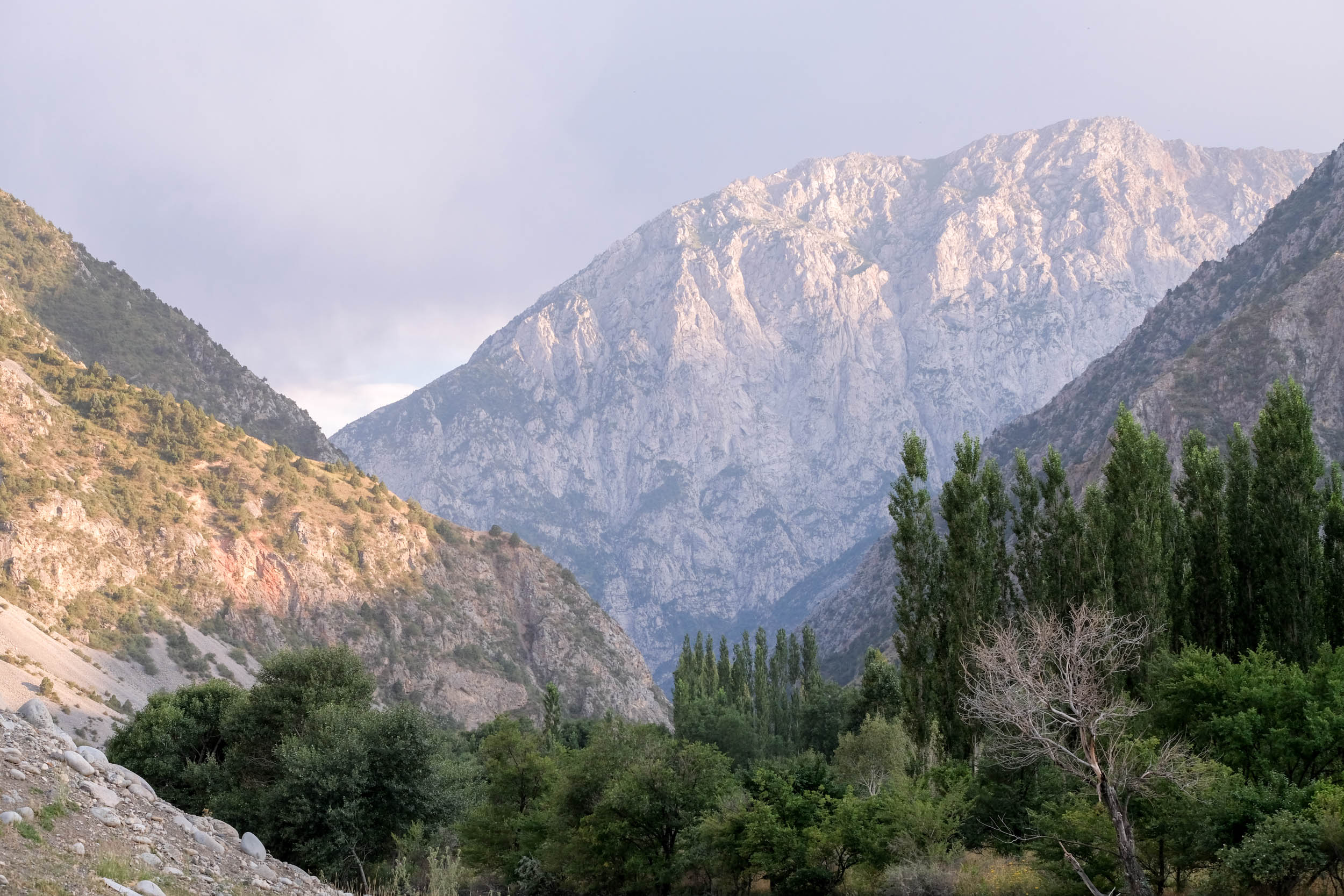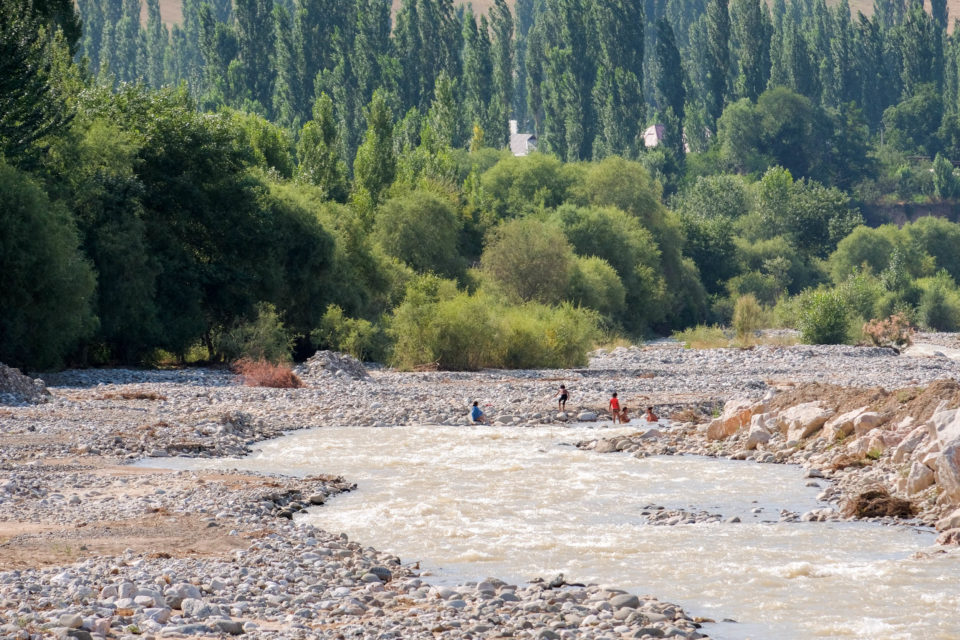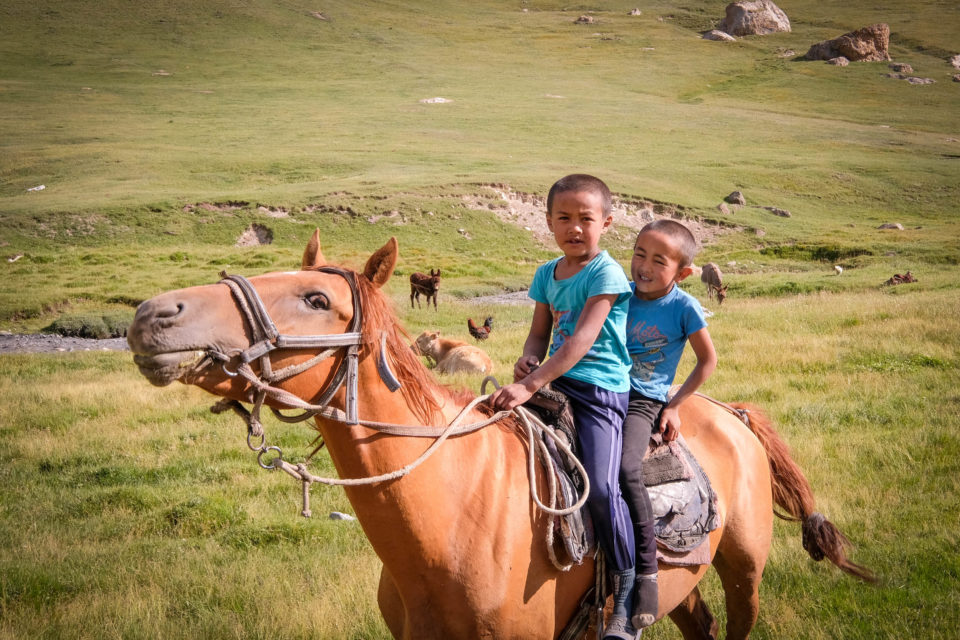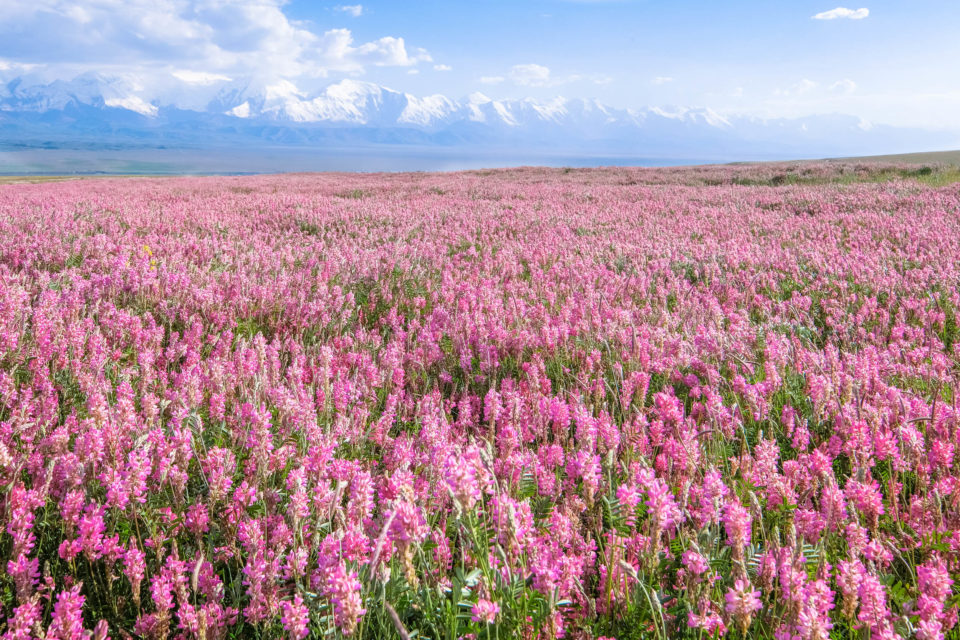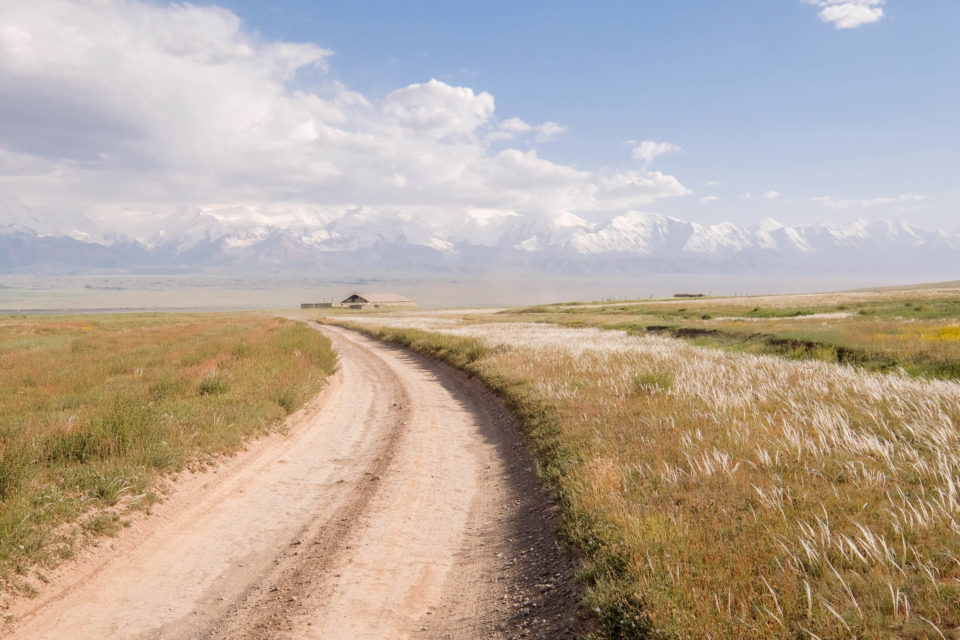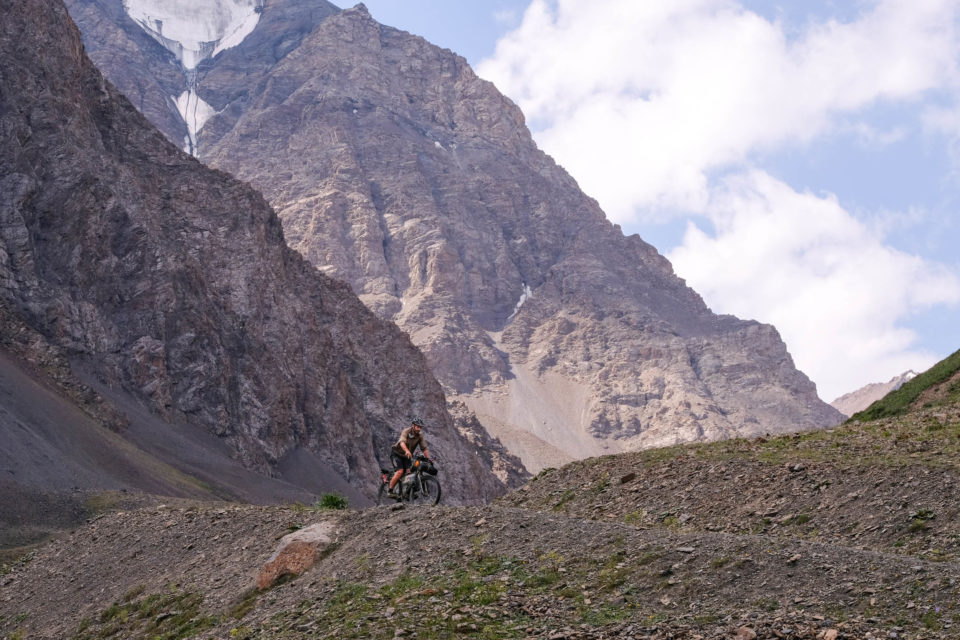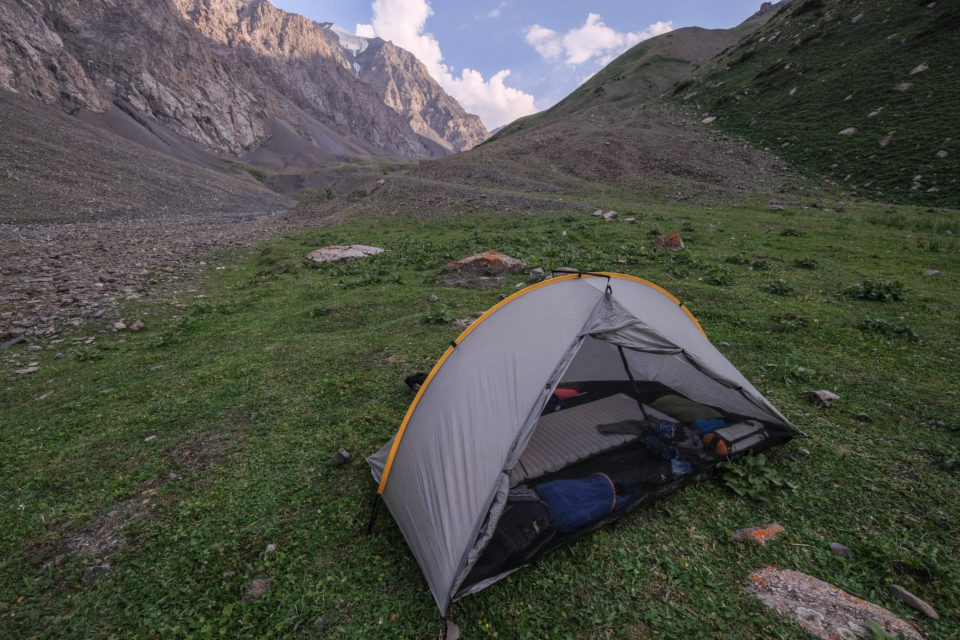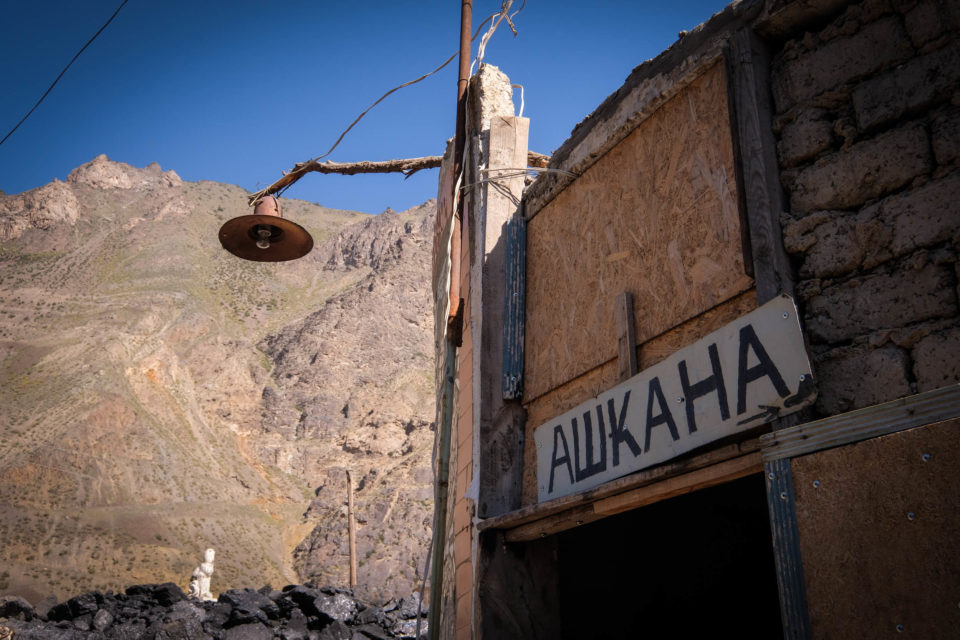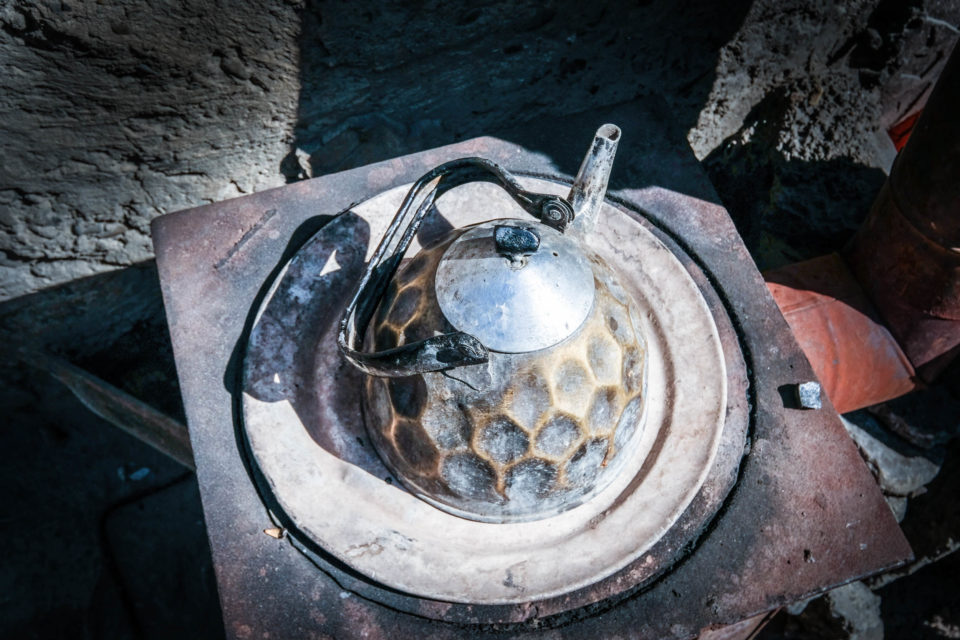Osh and the Edge
Share This
While pushing and carrying his bike over a steep pass in the mountains above Osh, Kyrgyzstan, Matthew Crompton ponders what it is that draws people to hazardous places in search of first, fastest, or longest achievements. Read on for his story of searching for, and ultimately finding his own limits…
Words and photos by Matthew Crompton (@matthew.crompton)
“There’s acceptable risk and unacceptable risk… You don’t want to take stupid risks. If you die taking a stupid risk, not only are you dead, but you’ve embarrassed yourself.” –John Krakauer
39°48’25.2″N 72°56’02.4″E
There were many reasons to worry, but I kept looking at the sky. Deep blue, the kind you only get in the high mountains, the airless infinity of space seeming only just out of reach. But I was safe for the moment. There were no clouds across the sun, no hint of strong winds that would blow a storm to where I stood, exposed and unable to bivouac, traversing a foot-wide, crumbling goat track across this cursed scree slope. I teetered, trying to keep my footing. At least I was safe from that. At least for the moment.
I really shouldn’t be here, I thought for the twentieth time that day. This was not a place to be, pushing (and increasingly carrying) a loaded bicycle. This was landslide territory. Traversing snow in midsummer territory. Long-way-to-fall territory. Yet there were many reasons that I was here, and ambition was the worst of them.
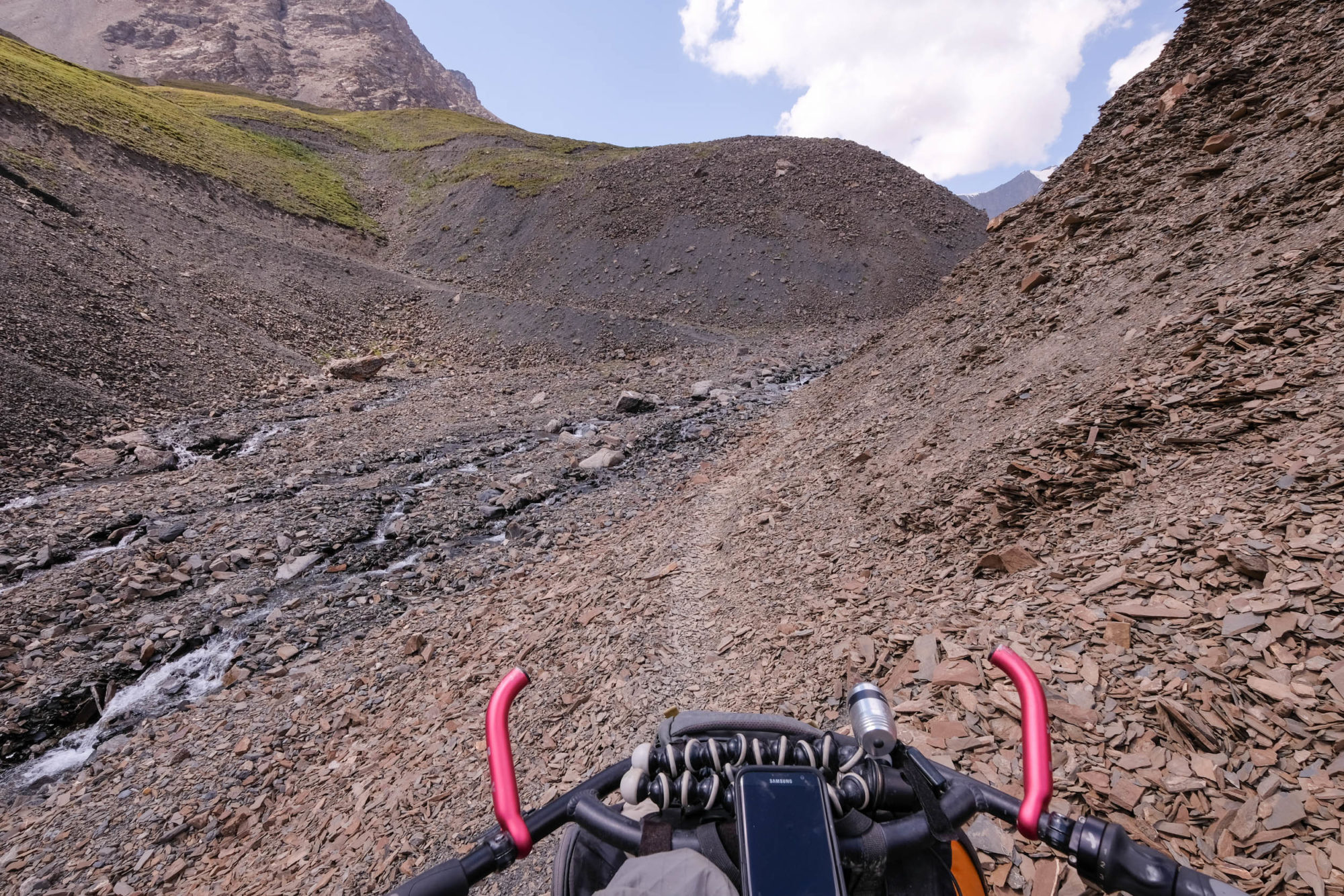
FOUR DAYS EARLIER
It’s true that in the past, ethnic unrest between the Kyrgyz and Uzbek populations had turned to riots, and in those days the city was no place to be. But like most non-active-war-zone environments, the Ferghana Valley existed in a state of general social and political equilibrium, punctuated only very rarely by any kind of meaningful turmoil. Even then, like most places, trouble didn’t burst fully formed like Athena from Zeus’s head, but was preceded and forecast by rumblings that warned you well ahead of time to stay clear. For the savvy traveller and all that.
Try explaining this, of course, to your aunt back home, or to friends, even those who have travelled a bit. For them, Osh—the whole of Kyrgyzstan, perhaps—will probably come off the tongue sounding deeply exotic, and possibly carrying more than a casual whiff of danger. You get there, though, and the fact hits you: it’s just another place.
Far-flung international travel rests on that misconception to some degree, the feeling amongst those who have not been there that this is the ends of the Earth, a place unknown and only for the brave. Wild. Out there. That’s bullshit, of course. If you want to die, though, you can get there. It just takes a bit of doing.
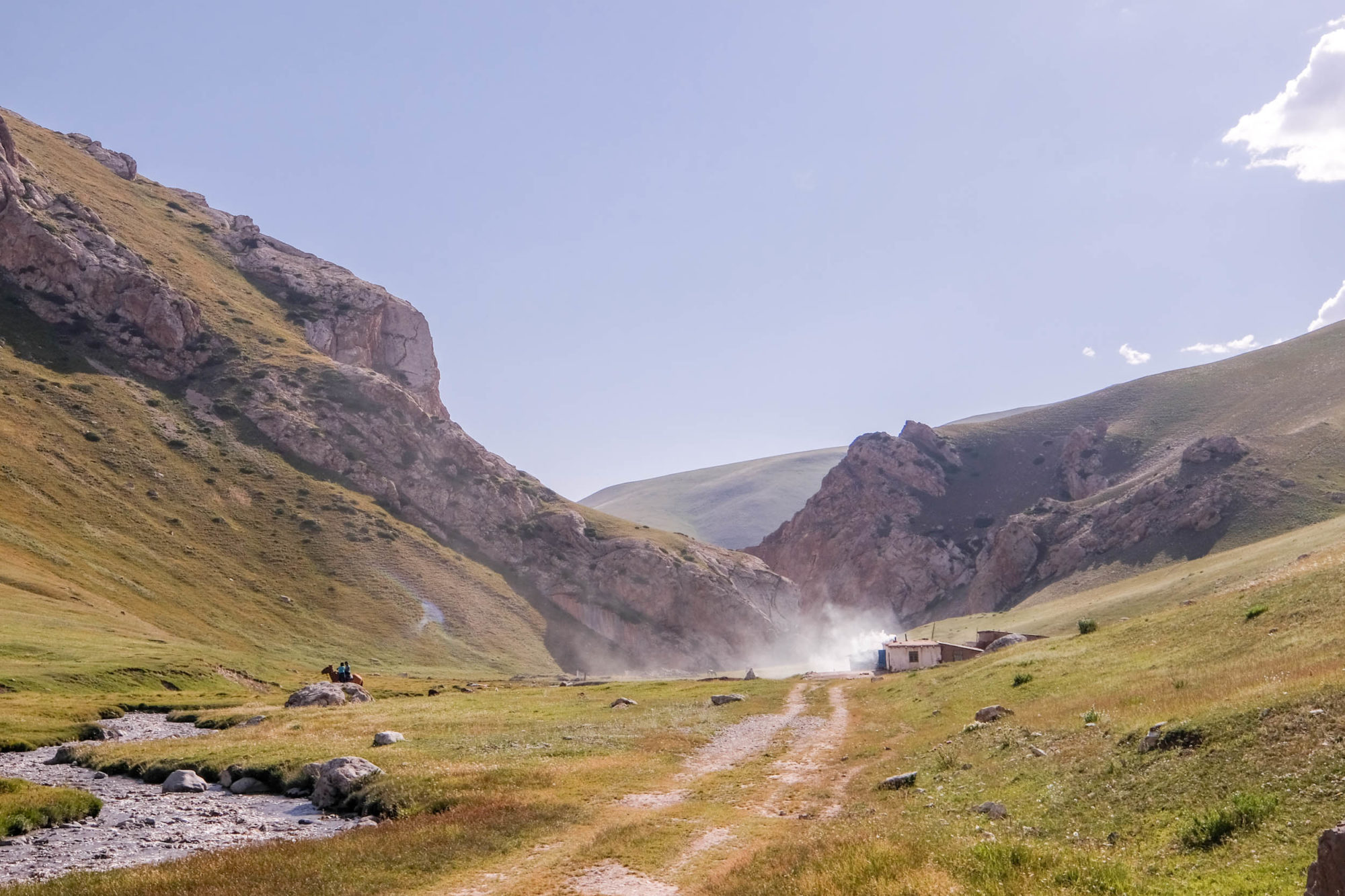
I’m not talking about the ways that you can ALWAYS die when riding a bicycle across foreign lands: squashed by a speeding, sleep-deprived trucker or head-on’ed by a daytime drunk driver, the ones your auntie back home never thinks to warn you about. No, I’m talking about specific, adventurey ways to die.
Adventure travel writing is a business preoccupied with firsts and extremes – the highest, the fastest, the longest and, above all, the most dangerous. Hazard is its hook, its stock in trade. And while, as I headed off south from Osh one July morning, it was indeed a ‘first’ that I was seeking, I’d be lying if I didn’t say that I was hoping for a sprinkling of danger, too.
It might have been that 30 years ago just cycling the M41 Pamir Highway was a newsworthy feat, but good luck to you if you think anyone’s interested in a story about that now. Adventure is mainstream, and the world has moved on. So, off I went in the heat down the dusty dirt road from Osh in the scalding sunlight, following a squiggle of jeep track along the map to what I hoped would be a new, unridden bikepacking route all the way to the Tajik border a few hundred kilometres to the south. A route over the 4200m Jiptik Pass in the Alai Mountains, intended as an alternative to the tired ribbon of the M41 and a thing – at last – worth writing about.
Actual exploration is, of course, always first and foremost an exercise in map-territory disambiguation. I’d seen the map south of Osh before, 1:500,000 with morning coffee back in my flat in Sydney, but it was a completely different thing to be here, maximum zoom on the map to where everything goes pixelated onscreen and the flies swarm in the heat around you and the dust rises in clouds off the road as a boxy 1980s Soviet Lada sedan passes, a goat trussed up in the back seat looking weirdly unperturbed.
At dusk, bombing down a small hill with the mountains rising up in front of me like the promise of adventure itself, my rear tyre exploded, spraying sealant everywhere. A broken bottle, its neck buried upended in the dirt road. Shit. The tread was widely gashed, and as I was soon to discover, not repairable even after an hour of work with tyre plugs and dental floss and a heavy needle.
That adventure looks like adventure to those sitting outside of it is, of course, mostly a matter of curation. People on Instagram don’t see the stopping and setting up the tripod, or the riding up and down the same stretch of track trying to capture the ideal ‘action’ image. They don’t see you filtering the grey silt out of river water before you boil it for coffee, or the three and a half solid hours you spend, until long after the fall of night, trying to get your spare tyre to seat on the rim using a mini pump, the sides of your fingers blistered and raw from the friction of endless futile pumping, but about which you have no choice because both your emergency 29er tubes died months ago back when you were riding through Tibet.
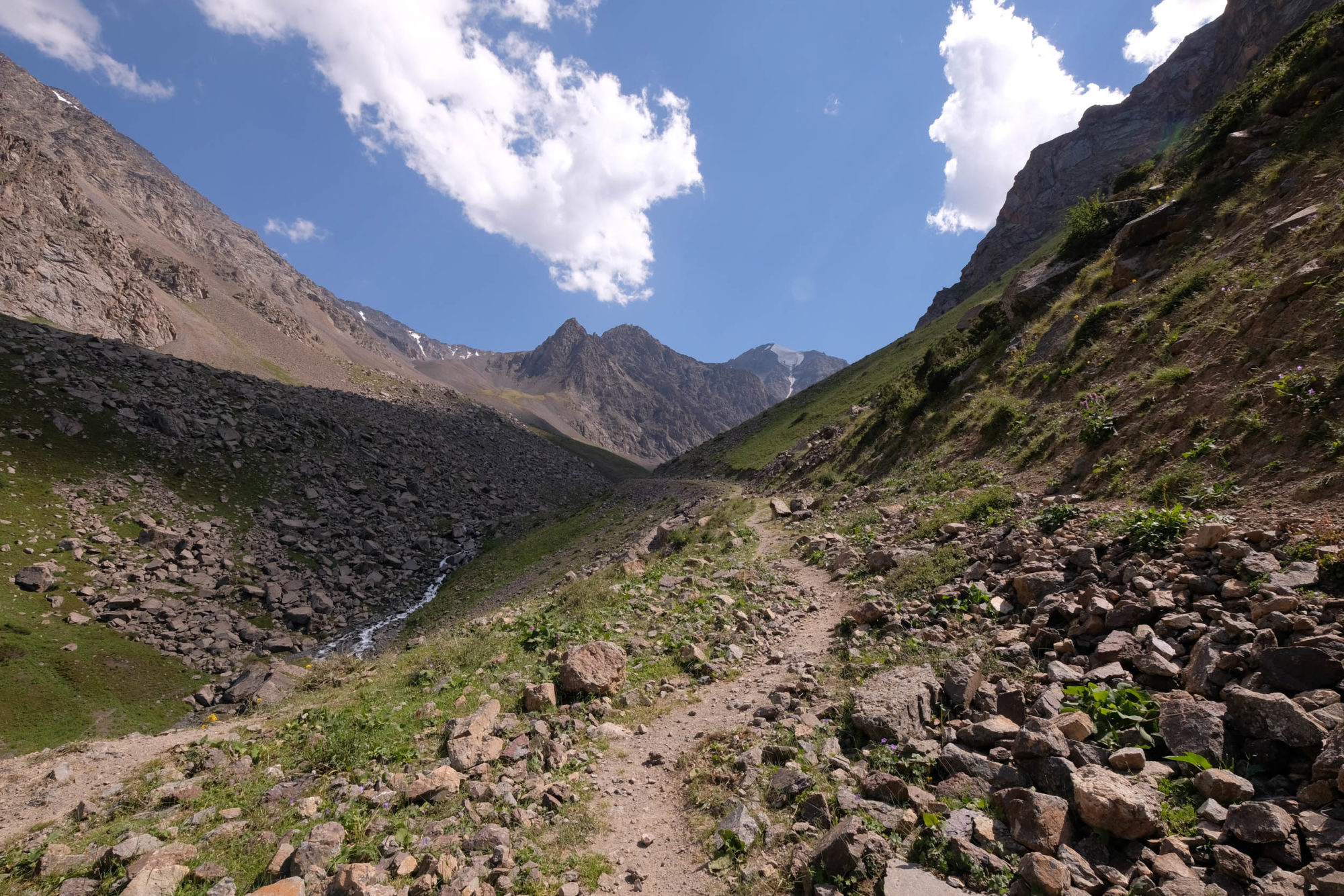
Yes, adventure is a bit like a movie sex scene: significant IRL faffing and inconvenience and discomfort and awkwardness that, when you put a frame around it, somehow translates as thrilling and desirable. And as adventure travel writers, we’re both purveyors and consumers of that particular glamour, equally eager to get high on our own supply as we are to push that image of adventure to others. There are few of us doing it who haven’t had that moment where we see the edge and celebrate with a thrill just how close we’re treading to it.
That cocktail of ego and risk is one hell of a mixture. In the morning I packed up and rolled on, the way rising more and more sharply as it followed the increasingly provisional track up into the mountains. By afternoon I’d stopped riding and was pushing full time, first because of the murderous grades and then, as the last nomadic summer grazing camp dropped away behind me in the steep, narrow valley, because the track was now an erratic, rock-strewn footpath, no longer rideable at all.
I hadn’t seen a bicycle – or indeed another traveller of any kind – since I left Osh, and this delighted me, even as a frisson of anxiety rose in me, looking up at the increasingly high and wild and rocky country. Camped in the last flat grassy patch below the pass looming nearly a thousand vertical metres above, I befriended a lone Kyrgyz sheepherder with my rudimentary Russian, cringing inside as he insisted on helping me to prepare dinner by slicing my onions and carrots despite the fact that he had recently lost the first knuckle of his index finger in some mishap and it was crudely sutured shut and purulent and black with necrosis around the edges of the wound.
The trail rising toward the pass high above me, I’ll be honest, looked sketchy as hell, and I had an extremely dim view of its actual rideability. But if others were publishing routes with 10+ kilometre sections of hike-a-bike, why not this? The country was beautiful, there were zero tourists, and I had a spring in my step in the morning as I set off, even if I was 100% out of food at this point and working in that mode of low-key starvation I’d gotten weirdly comfortable with over the last few months.
I pushed for hours up and across the steep, bare, crumbling slopes. At the first big landslide, where I carried my bike hanging from one hand as I clung to the slope with the other, I thought I should turn back. At the second, where I lost the track entirely and had to go scouting to find sign of it again, I nearly did turn back, the desire policed by the fear of having to renegotiate the first landslide I had already laboriously crossed. By the third, I was not just exhausted by the effort and the altitude, but half-sick with worry, and I drank pure icy meltwater that felt like cold fear in my stomach. I had now gotten so deep into this that the only thing that felt more dangerous than going forward was turning back.
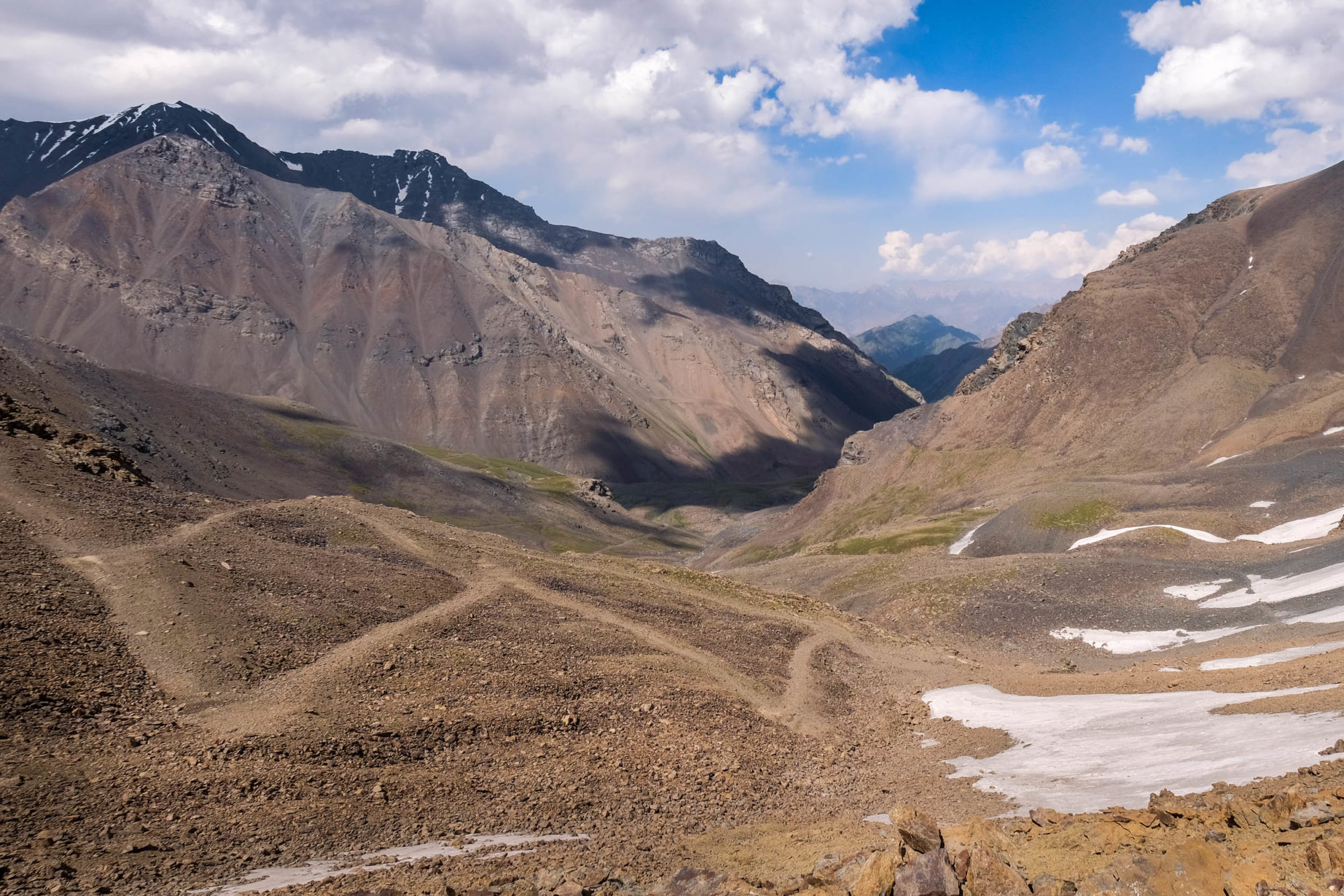
That, of course, was incorrect. The final approach to the Jiptik Pass itself ran high up along the eastern wall of the valley, with a long, steep, unprotected slope falling off into the distance far below. Snow lay in broad rags across the track, which was less than twelve inches wide in most places, and as I began the traverse, the sickening sound of rocks cascading downslope came to my ears and made my tongue and lips fill with needles.
The other side of the pass, descending for hours on foot into the Jiptik Valley until eventually I could ride again, wasn’t fun, or even Type-II Fun, but I wasn’t going to die. I flew down gorgeous singletrack in a distracted, half-numb state, relieved and angry at myself for the thing I’d just done, passing through seasonal jailoo grazing camps where people greeted me with where the hell did he come from looks, and finally back to civilisation: the grim one-horse settlement of Sary-Mogol along the A372 highway.

I entered the town’s lone restaurant half-crazed with hunger and asked what they had. ‘Mmm, yeda nyet’: ‘There is no food.’ Fucking tops. Full of old Snickers bars from a dilapidated shop and a warm beer I bought from a shed out back of some lady’s house, I sat nursing a sprained ankle, looking out at the mountains in the twilight and wondering at why the hell we are actually driven to do this.
Sayre’s Law states that the lower the practical stakes in an endeavour, paradoxically, the more intensely people will feel about it. Thus we, who love the outdoors and the thrill and beauty of wild places, hike risky routes, raft dodgy rivers and yes, take bicycles stupid places that bicycles have absolutely no business being, often for little more than the promise of free outdoor gear and the odd article commission: the most picayune reasons ever to risk your life for.
Yet as the saying goes, you never know how much is enough until you also know how much is too much. Sitting in my physical exhaustion and relief as the day died to night on the mountains before me, I realised that I’d found the edge. Not the idea of the thing, but the thing itself, which could only be discovered by surpassing it.

As Cormac McCarthy wrote, “Not again in all the world’s turning will there be terrains so wild and barbarous to try whether the stuff of creation may be shaped to man’s will or whether his own heart is not another kind of clay.”
It was only barely dark in the border town and I was already falling asleep. The mountains to the south glowed like inconceivable supernatural things in the gloom: Tajikistan, into which I would cross two days hence. Shit, that scared me, too. But why not? I thought, aversive memory already lessening. To be afraid is not the same as to be unwilling.

About Matthew Crompton
Matthew Crompton is an award-winning writer and photographer preoccupied with bikes, hikes, and the mystical solitude of the way-out. Having spent much of last year on a bicycle in the mountains of Tibet and Central Asia, in 2019 you’ll find him in Baja and Colombia enjoying far more fish tacos and far less vertical. Follow Matthew’s travels on Instagram @matthew.crompton or his website.
Please keep the conversation civil, constructive, and inclusive, or your comment will be removed.






